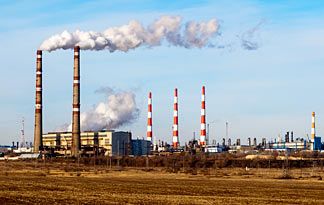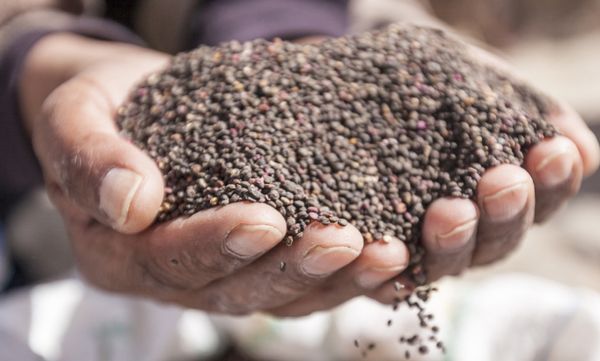
As if we needed another reason to cool it on our carbon dioxide emissions, it turns out that high levels of atmospheric CO2 are rendering our crops less nutritious. This will, as usual, shake out differently for some human populations than for others.
In developed countries, access to protein can be easier than in other parts of the globe, with readier access to meat and fish. But 76 percent of the world's humans get the majority of their dietary protein from plants. And with the world's population projected to reach 9.5 billion by the year 2050, it's only going to get tougher to produce enough crops to cover everybody's nutritional bases – if that proportion remains stable, and especially if more people look to plants for protein.
Advertisement
A new study published in the journal Environmental Health Perspectives looks at current and projected CO2 levels worldwide, and finds that, as human-caused CO2 emissions cause atmospheric levels to rise, the nutritional value of staple crops like rice and potatoes will fall by more than 5 percent by 2050. That decrease in the crops' nutritional value will put about 150 million people in 18 countries at risk of serious protein deficiency.
"This study highlights the need for countries that are most at risk to actively monitor their populations' nutritional sufficiency, and, more fundamentally, the need for countries to curb human-caused CO2 emissions," said Samuel Myers, senior research scientist at the Harvard T.H. Chan School of Public Health, in a press release.
To figure out how much protein different crops might lose as atmospheric CO2 levels rise, the research team ran experiments in which they exposed important staple crops to high concentrations of CO2. They found the protein in rice, wheat, barley and potatoes decreased by 7.6, 7.8, 14.1 and 6.4 percent, respectively. They then applied these findings to United Nations data about what people in developing countries eat, and how much, and found that in many places where protein deficiency is already a problem for millions – Sub-Saharan Africa, for instance – the situation's not going to get any better because cereals already make up such a large portion of their diet. India, whose population relies heavily on staples like rice and wheat for protein, might lose as much as 5 percent of the protein from the standard diet, putting 53 million new people at risk for protein deficiency. Add to that the projected increase in food costs in coming years, and you'll have people paying more for less food that's less nutritious.
There are several ways to prepare, Myers suggests. He points out that "strategies to maintain adequate diets need to focus on the most vulnerable countries and populations." He also points to breeding crops less sensitive to the effects of CO2, enriching crops' nutritional yields, and even working to diversify diets – not putting all your nutritional-needs eggs in one basket, so to speak. (And maybe putting some eggs in peoples' baskets.)
"And, of course," he says, "we need to dramatically reduce global CO2 emissions as quickly as possible."
Myers also published a study in the journal GeoHealth this week which finds that rising levels of CO2 may also result in worldwide dietary iron deficiencies, which can be especially dangerous for women and children. Accompanying those findings, a 2015 study conducted by Myers suggests that rising CO2 emissions may lead to decreased zinc levels in food.

Advertisement


